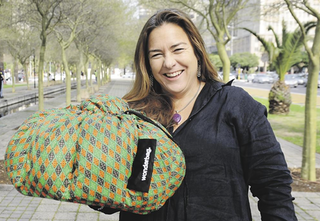2 May 2016
Authentic food news
- The whole cultural appropriation story continues to weigh on me. I read Cynthia Bertelsen on “Peanuts and the cooking of West Africa” reflecting on my own pitiful atempts at a “Ghanaian stew” many years ago and wondering whether the twittersphere would descend on her. It didn’t, I don’t think, and the piece remains well-worth reading.
- Cynthia suggests that there’s appropriation of a different kind at work, with the peanut (from South America) embraced by the people of West Africa after its introduction by the Portuguese and then again by those same people transported to North America as slaves, as a substitute for their remembered local Bambara groundnut. Cynthia has written in detail about Bambara groundnuts too, but not (I think) about which groundnut was named first in English, and which appropirated whose name. Very intriguing, and something I’d like to research more.
- But how do I actually feel about cultural appropriation, given that I don’t really have a culinary culture? The closest I can come is my hatred for what the bagel has become, so often; a soft, unfulfllling bread roll with a hole. And being in New York, that’s doubly obnoxious. But who is baking the fabled New York bagels, which can still be found, today? Puerto Ricans until fairly recently, and probably all sorts of others, not necessariy even Jewish. More research needed on that front too.
And there I’ll leave it, for now.

 Quinoa — that darling of the health-conscious western consumer — came in for a lot of flack a few years ago. Skyrocketing prices caused some food activists to claim that the poor quinoa farmers of the high Andean plains in Bolivia and Peru were no longer able to afford their staple food. Every mouthful we ate was taken direct from a hungry peasant. Some people even gave up eating the stuff. Other writers retaliated by saying that high prices were the best thing that ever happened to those poor farmers. And agricultural economists saw an opportunity to prove their worth.
Quinoa — that darling of the health-conscious western consumer — came in for a lot of flack a few years ago. Skyrocketing prices caused some food activists to claim that the poor quinoa farmers of the high Andean plains in Bolivia and Peru were no longer able to afford their staple food. Every mouthful we ate was taken direct from a hungry peasant. Some people even gave up eating the stuff. Other writers retaliated by saying that high prices were the best thing that ever happened to those poor farmers. And agricultural economists saw an opportunity to prove their worth.

